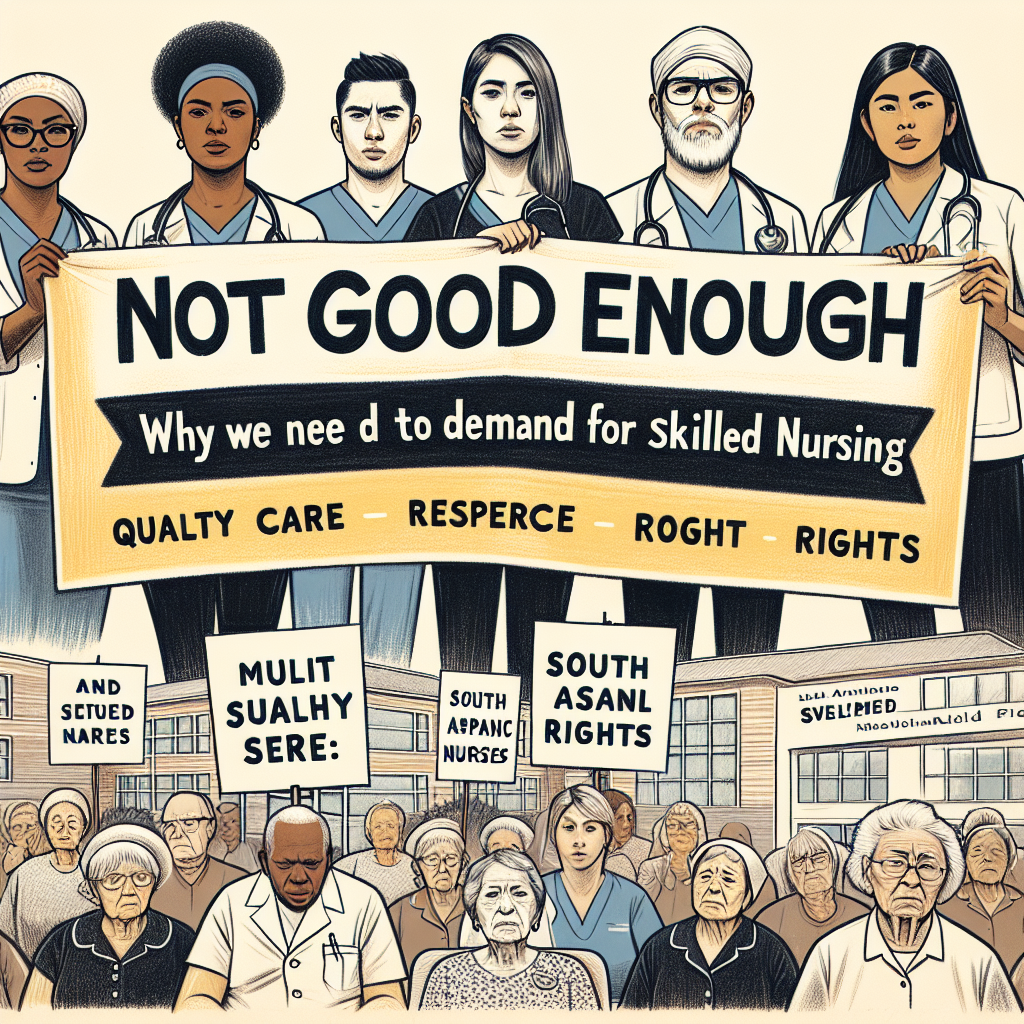New York, NY—In the bustling corridors of aging America, skilled nursing facilities (SNFs) have come under increasing scrutiny for failing to meet the needs of a booming demographic. Despite the critical role they play in healthcare, a concerning number of these institutions are falling short, leaving families and advocates clamoring for change. It’s a rallying cry that’s gaining volume: “Not Good Enough”: Why We Need to Demand More for Skilled Nursing.
The heart of the issue lies in the stark reality facing America’s elderly population. According to a recent report by the National Center for Health Statistics, over 1.3 million Americans reside in skilled nursing facilities. Yet, stories of inadequate care, neglect, and systemic inefficiencies paint a grim picture of what being a resident in some of these facilities means. Advocates argue that sheer compliance with minimum standards is a far cry from the quality and compassionate care that should be the hallmark of these institutions.
“Everything is ‘fine’ until it’s your loved one facing neglect,” Joanna K., a healthcare advocate, shared in a recent interview. This sentiment echoes across numerous testimonies from families who have navigated the skilled nursing landscape, only to find their expectations for competent, compassionate care grossly unmet.
The disparity in care quality can partially be attributed to a lack of staffing, a challenge that has plagued the industry for years. Despite regulations, many facilities operate with the bare minimum of staff, compromising patient care and safety. The pandemic exacerbated this issue, spotlighting the dire consequences of understaffing and inadequate infection control measures.
Moreover, the financial structures underpinning many SNFs often prioritize cost-saving measures over investments in staff training, facility improvements, and resident well-being. It’s a systemic flaw that turns vulnerable residents into casualties of profit margins.
So, what needs to change?
Experts agree that a multifaceted approach is crucial. Increasing transparency about facility performances, enhancing federal and state oversight, and fundamentally rethinking funding models are starting points. Additionally, there’s a pressing need to elevate staffing standards, ensuring that facilities not only meet but exceed minimum requirements. This includes not just numbers, but the quality of training and the fostering of a compassionate caregiving culture.
Emphasizing person-centered care models can shift the paradigm from one of mere survival in these facilities to thriving. Such models prioritize individual resident needs, preferences, and dignity, ensuring that skilled nursing serves as a supportive, enriching environment rather than a holding station.
Advocates like Joanna urge for a collective raising of voices, asserting that change is overdue. “It’s about dignity at every age. Our expectations must be higher, and our demands louder, for the sake of our elderly population,” she states.
Indeed, as “Not Good Enough” becomes the battle cry for those fighting for the soul of skilled nursing, the path forward is clear. It will require legislative guts, societal shift in perceptions, and an unwavering commitment to the values of dignity, respect, and quality care. For a nation judged by how it treats its elderly, the time to demand more is now.


